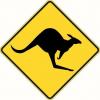I have a Lie Nielsen low angle jack plane. Was going to need to flatten some glue ups, any advice if this is the best plane to use? Currently has a 30Deg bevel on the blade. Should I get a 50deg blade too?
My wood is mostly flat sawn, some knots but not alot.
Thanks




 Reply With Quote
Reply With Quote




